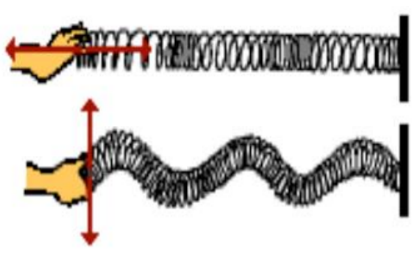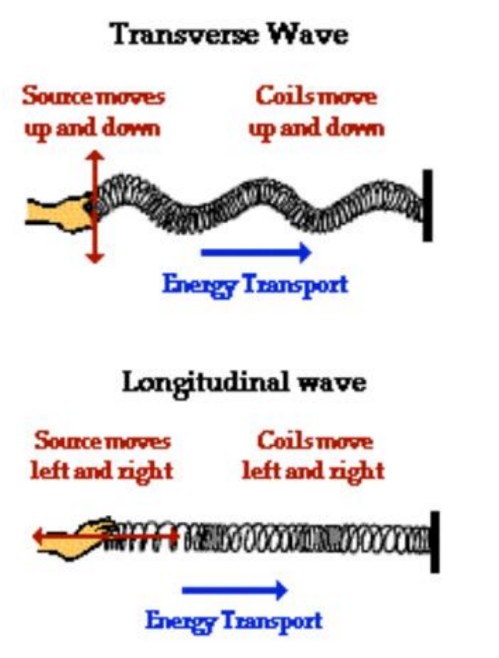Introducing Waves
- Waves carry energy.
- For Example, during an earthquake, the seismic waves produced can cause great damage to buildings and the surroundings.
- What is a wave?
- Wave is a method of propagation of energy.
For example, when we drop a pebble into a pond of still water, a few circular ripples move outwards, on the surface of the water. As these circular ripples spread out, energy is being carried with them.
- Wave is a method of propagation of energy.
Sources of Waves
- The source of any wave is a vibration or oscillation.
- For example, the forming of the slinky waves as shown.
- Wave motion provides a mechanism for the transfer of energy from one point to another without the physical transfer of the medium between the two points.

Slink waves can be made by vibrating the firt coil back and forth in either a horizontal or a vertical direction.
Two Types of Waves
• Transverse Wave Rope waves, Water waves, Light waves, Radio waves, Electromagnetic waves.
• Longitudinal Wave Sound waves and waves produced in a vertical oscillating spring under tension.

